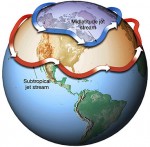
jet stream
A JET STREAM IS A relatively narrow band of strong horizontal winds in the atmosphere. This band is 100 to 200 mi (250 to 500 km) wide and 1 to 2 mi (several km) deep. The winds in this band are stronger than those in horizontal or vertical regions adjacent to this band. The boundaries […]
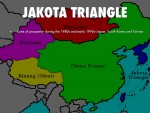
Jakota Triangle
THE JAKOTA TRIANGLE is an East Asian region comprising three countries: JAPAN, SOUTH KOREA, and TAIWAN. The concept originated with Harm de Blij and it has become popularized in the many editions of Geography: Realms, Regions and Concepts, first appearing in the 8th edition, published in 1997. The term triangle was inspired by the three-sided […]

Islam
MOST RELIGIONS, such as Confucianism, Buddhism, Jainism, and Judaism have a geographic point or place of origin and remain largely focused upon that nexus. Some, such as Christianity and Islam, have engaged in specific efforts to proselytize and spread their faith, often as an integral part of trade. Among the significant geographic impacts of Islam […]

irrigation
IRRIGATION IS THE application of water to crops in addition to what normal local precipitation supplies. It is primarily used in areas with less than 20 in (51 cm) of rain per year (semiarid or arid climates) or in areas of monsoon rains with long dry periods. Irrigation allows growth of nondryland crops in semi-arid […]

Intifada
INTIFADA IS THE name given to the popular uprising of the Palestinian population against the continuation of Israeli occupation of the West Bank and Gaza Strip. There have been two Intifadas, the first, essentially spontaneous and indigenous, began in December 1987 and continued sporadically until the early 1990s. The second Intifada began after the collapse […]
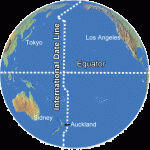
international date line
THE INTERNATIONAL date line (IDL) is the imaginary line on Earth slicing through the center of the PACIFIC OCEAN that separates two consecutive calendar days. Countries in the Eastern Hemisphere to the left of the line up to the Prime Meridian are always one day ahead of countries to the right of the line and […]
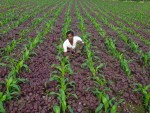
intercropping
THE CULTIVATION OF TWO or more crops in combination in the same field at the same time is known as intercropping. This is one of two types of multiple cropping, the other being sequential cropping, whereby two or more crops are grown in sequence in the same field. There are four types of intercropping: Mixed […]
insurgent state
INSURGENT STATE is a term that refers to the creation of a geographic area that not only claims independence from the larger state, but whose leaders and policies also seek to replace the existing political order and state, or to become independent. It is not a segment of the country that seeks independence (civil war). […]

Industrial Revolution
THE INDUSTRIAL Revolution is one of the most dramatic events in modern world history, an event which has more or less influenced all nations of the world in one form or another. The Industrial Revolution began in the late-18th century in England, UNITED KINGDOM, in a region of the country known as the West Midlands—the […]

imperialism
FEW TOPICS ARE MORE emotion-provoking than imperialism, which many consider to be a product of the 20th century and of Europeans. Nothing is further from the truth. By definition, imperialism is the act of imposing one's will (personal or national) on another culture or state to create an empire, or an empire is the consequence […]

immigration
ALIENS OR NONCITIZENS who reside or seek to reside temporarily or permanently within the borders of a country are generally termed as immigrants. The term immigrant refers to someone who enters a country, while the word emigrant refers to someone who leaves a country. In the early times, the tendency was to look upon the […]
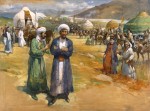
Ibn Battuta (1304–1377)
BORN IN TANGIER, MOROCCO, Muhammad ibn Abdullah ibn Battuta was a famous Arab traveler and writer who explored in Africa, Europe, and Asia. Ibn Battuta's journey began in North Africa in 1325 with travels that included visits to EGYPT, SYRIA, Mecca on the Arabian Peninsula, northeastern IRAN, southern IRAQ, the RED SEA, YEMEN, East Africa, […]

Hunza
THE HUNZA VALLEY in north PAKISTAN is noted for two features: Burushaski, a language that appears to be unrelated to any other language in the world, and secondly, the myth of the health and longevity of its inhabitants, the Hunzakuts. This valley was the reputed location of novelist James Hilton's Shangri-La. The valley is located […]

Huntington, Ellsworth (1876–1947)
CONTEMPORARIES WERE impressed by the clarity of Ellsworth Huntington's style, the intensity of his reasoning, the simplicity of his grand theories, and his unique ability to generalize: “With devastating logic and sound scholarship, Ellsworth Huntington shows how climate, weather, geographical location, diet, health and heredity control the character of a nation—and determine its dominant or […]

Humboldt, Alexander von (1769–1859)
ALEXANDER VON HUMBOLDT is significant to the study of geography because of the breadth of his scientific inquiries and knowledge and his ability to integrate these studies within larger works that were both scientifically advanced and appealing to a wider nonspecialist public. He was known as a natural scientist of the highest order, working to […]

human geography
HUMAN GEOGRAPHY FOCUSES on interpreting and describing the various ways in which humans in all places and cultures adapt to and possibly modify their natural geographic environments. At the local or national scale, human geographers look at how economic, political, and cultural issues are related to spatial organization in different parts of the planet. How […]

human-environment relationships
THE ENVIRONMENTAL approach in geography, history, anthropology, psychology, and other spheres of humanitarian thought remains one of the most alluring and unequivocal since its origin in ancient times. At the beginning of the 21st century, interdisciplinary studies of cultural history using contemporary methods of instrumental analysis are often bringing scientists to the necessity of taking […]
horst
HORST IS THE German word for a high-nesting area for a bird, so the term infers a high elevation. Early geomorphologists fittingly applied the German word to a fault block mountain range. The faulting and vertical displacement is due to tension stresses in the crust. Tension causes crustal rock to spread apart and break to […]
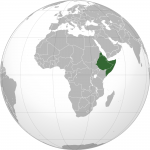
Horn of Africa
THE PENINSULA OF NORTHEAST Africa is called the Horn of Africa. It lies opposite of the southern Arabian Peninsula. This area is also known as the Somali Peninsula because within it lies the countries of SOMALIA and eastern ETHIOPIA. It is the easternmost extension of the African continent separating the Gulf of Aden from the INDIAN […]

homeland security
AS DEFINED BY the executive branch of the U.S. government, homeland security is “a concerted national effort to prevent terrorist attacks within the United States, reduce America's vulnerability to terrorism, and minimize the damage and recover from attacks that do occur” (July 2002 National Strategy for Homeland Security, issued by President George W. Bush). In […]

historical geography
GEOGRAPHERS SEEK TO understand the world by examining spatial relationships. The types of questions they might ask are: Why are things located where they are? How are places different from each other? How are places like each other? How are places interconnected with each other? How do people affect their natural environment and how does […]
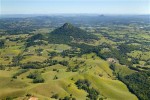
hinterland
FROM THE GERMAN umland, a hinterland is inland territory behind and bordering a town on a coast or river, or the backcountry extending from an inland town. In both cases, the hinterland generally falls under the legal and economic jurisdiction of the same state to which the city belongs. The hinterland supplies a city with […]

hemisphere
THE WORD hemisphere means “half a sphere.” In geography, the term refers to half the Earth, and the enclosing boundary line of a hemisphere is a great circle. A space traveler viewing the Earth from a great distance will see only half the earth, a hemispheric perspective. This is true because the Earth is a […]

heartland
THE HEARTLAND THEORY was developed by Scottish geographer, Sir Halford J. MACKINDER. He read his paper “The Geographical Pivot of History” before the Royal Geographical Society in London in 1904, and soon afterward published his views on the influence of geography on politics in the Geographical Journal. Mackinder's argument introduced into POLITICAL GEOGRAPHY the view […]
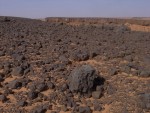
hammada
HAMMADA IS AN Arabic word used to describe “desert pavement.” The deserts of the world that have sand dunes capture the imagination, but many of the world's desert areas are bleak, stony deserts. Usually, the stony deserts are level plains that are virtually devoid of vegetation and also have very little, if any, soil. These deserts can have a relatively smooth, […]
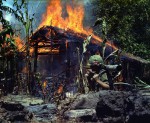
guerrilla base
A GUERRILLA BASE or base area is a physically secure geographic location used by political dissidents from which they can launch military attacks. Historically, such bases were local or national. In 2003, the process became global, with guerrilla bases of al-Qaeda staged in AFGHANISTAN, PAKISTAN, the PHILIPPINES, SUDAN, and possibly South America. Since guerrilla bases […]
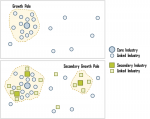
growth pole
GROWTH POLE REFERS to the concentration of highly innovative and technically advanced industries that stimulate economic development in linked businesses and industries. This concept was first introduced by Francois Perroux in 1950, was further sharpened in following publications, and finally evolved into an idea that came to take on a meaning rather different from the […]

grid/graticule
THE EARTH IS NOT spherical but rather an ellipsoidal shape where the north and south poles are flattened and the equator bulges. This unique shape is called a geoid. In order to uniquely locate features on the Earth's surface, a reference system is required. An imaginary network of lines called a grid or graticule is […]
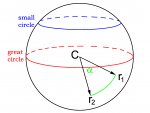
great circle
A GREAT CIRCLE IS defined as a direction line that forms a full circle. This is also called a true azimuth. A great circle divides the Earth into equal halves and on the idealized surface of the Earth, the shortest distance between two points lies along a great circle. The equator is a great circle, […]

Great Barrier Reef
THE GREAT BARRIER REEF, located on the northeast coast of AUSTRALIA, is comprised of the world's largest cluster of coral reefs. It is 1,250 mi (2,012 km) long; running along 10 mi (16 km) of the eastern Australia shore in the north to 100 mi (161 km) in the south. Its length is comparable to […]
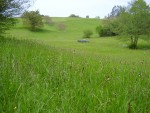
grasslands
MANY DIFFERENT TYPES of ecosystems throughout the world are described as grasslands because they are dominated by species of grass with a range of other plant types as subordinates within the community. Grasslands occur at most latitudes and altitudes reflecting the wide range of environmental tolerances that characterize this huge taxonomic group of plants known […]

Grand Canyon
WITH DIMENSIONS of 277 mi (446 km) long and 18 mi (29 km) wide, the Grand Canyon is one of the most spectacular natural wonders of the world. Crafted by the Colorado River, it is an enduring and unchallenged natural symbol of North America. At its present size of 1,904 square mi (4,911 square km), […]

Grand Canal (China)
THE GRAND CANAL is one of the wonders of the world. Built in the 7th century by CHINA's Sui Dynasty, it stretches about 1,100 mi (1,800 km) across eastern China—about the same distance as MIAMI, FLORIDA, to NEW YORK CITY, or LOS ANGELES, CALIFORNIA, to Vancouver, CANADA. The canal was built to transport rice and […]
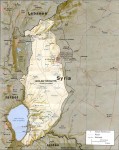
Golan Heights
THE GOLAN HEIGHTS (in Arabic, Al-Jaw-lan) is a hilly region in southwest SYRIA, bordering nearby regions of LEBANON and JORDAN, with a highest point of 7,297 ft (2,224 m). The area is one of the most heavily disputed areas in the history of the 20th century. When the state of ISRAEL emerged after the vote […]

globalization
GLOBALIZATION IS A term that is used quite frequently but whose meaning remains obscure. One definition of globalization is that is a process of complex interconnections between societies, cultures, institutions, and individuals that takes place worldwide. It also describes the increased mobility of goods, services, labor, technology, and capital. Although globalization is not a new […]
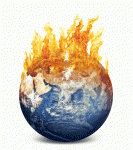
global warming
GLOBAL WARMING IS an increase in the temperature of the Earth due to an increase in greenhouse gases that reduce natural cooling. Periodically, the natural changes in the Earth's climate have produced increases and decreases in average temperature and the changes have altered the climate of the Earth. The current debate over global warming centers around […]
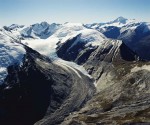
glaciation
THE ACTION OF GLACIERS has made a huge difference in the appearance of the Earth's surface. Changes in the land from the action of glaciers is called glaciation. A glacier is a moving mass of ice, air, water, rock and sediment. Glaciers flow very slowly with gravity created by their own mass. During the last […]

Gibraltar
GIBRALTAR IS AN overseas territory of the UNITED KINGDOM. Historically known as one of the Pillars of Hercules, the Rock of Gibraltar has guarded the entrance to the Mediterranean world since the beginning of Western civilization. Held by Great Britain since 1704 (formally since 1713), the peninsula remains one of Britain's last overseas territories, with little […]

geostrophic winds
GEOSTROPHIC WINDS blow above the friction layer of the Earth, balanced between pressure gradient forces and the Coriolis force. Geo, meaning “Earth,” and strophic, or “turning,” refer to the Coriolis force of the Earth's rotation. The Coriolis force causes wind to bend, eventually equalizing with the pressure gradient force. Geostrophic winds blow aloft and parallel to […]

geopolitics
GEOPOLITICS IS POLITICS taking place in regard to geographical circumstances, territorial relations and aspirations of political entities. It derives from the spatial settings of place as well as from territoriality as a universal dimension of human (and animal) behavior. While the spectrum of geopolitical action is very wide, it is never just derived from “geographic […]

geomorphology
GEOMORPHOLOGY IS the study of landforms. Landforms are surface expressions of rocks, as are various features made by rivers, groundwater, waves and currents, winds, glaciers, and corals. Landforms come in all shapes and sizes. A DELTA, PLATEAU, VOLCANO, sinkhole, and beach are all landforms. Geomorphologists are geologists and physical geographers who specialize in the study […]
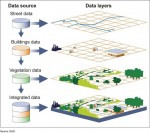
geographic information system
GEOGRAPHIC INFORMATION systems are widely known by their abbreviation, GIS. The most popular definition of GIS is: a computer-assisted system for the acquisition, storage, analysis, and display of geographic data. Conceptually, GIS has been defined as the digital representation of the landscape of a place (a site, a region, a planet), structured to support analysis. A […]
geographic database
A GEOGRAPHIC database can be defined as a catalog that stores data that are spatially referenced. These databases are collections of similar data that are related either through location, data structure or type, or common underlying purpose. Geographic databases can be divided into two main data concepts, graphic and nongraphic. Nongraphic data is data that […]

gender geography
GENDER GEOGRAPHERS, prominent in the discipline since the 1980s, focus their research on the differences between men and women in virtually all aspects of social, economic, and political life and the resulting inequalities that result. The sub-discipline of gender geography has grown dramatically over the past two decades and there is a specialty group within […]

gallery (galeria) forests
GALLERY FORESTS are commonly defined as any forest along a river or stream, especially in a grassland. Since geographers frequently cite BRAZIL as the best example of this phenomenon, we often use the Portuguese word galeria to identify it. Gallery forests are also found in places other than Brazil. For example, an article in the […]

Gaia
THE IDEA THAT nature is a holistic unity has been constantly existent throughout human history. The major reemergence of the idea took place in the early 20th century in the name of holism. This reappearance of holism became the foundation of the Gaia hypothesis, the most recent recurrence of the ancient belief of the harmonious […]
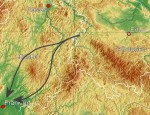
Fulda Gap
LOCATED IN GERMANY, between the cities of Leipzig and Frankfurt, and oriented along the Fulda River, the Fulda Gap is a name given to a mobility corridor oriented on a line that runs from Leipzig toward Frankfurt. It is bounded on the south by the Vogelsberg Hills and on the north by high ground north […]
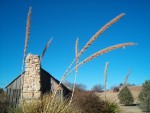
frontier
AS WITH SO MANY geographic terms, the concept of frontiers is closely linked with other ideas. In practice, frontiers rarely remain the same; changing with time and technology, and in the process adjusting the world they have affect upon. It has become common to view frontiers in reference to some political or geographical area that lies […]

French Southern Territories
ONE OF THE MOST remote spots on Earth, the French Southern Territories consists of three groups of islands in the southern INDIAN OCEAN, not too far from the coast of ANTARCTICA, and a thin slice of the Antarctic continent itself, known as Adelie Land. No one lives permanently in these territories, but they are seasonally […]
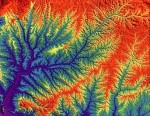
fractal geography
IN THE FRACTAL Geometry of Nature (1983), Benoit Mandelbrot writes, “Clouds are not spheres, mountains are not cones, coastlines are not circles, and bark is not smooth.” In an effort to more properly analyze and represent nature mathematically, Mandelbrot developed a new geometric pattern called a fractal. There are various definitions for the complex structure of […]
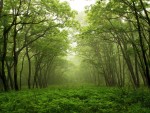
forests
FORESTS COVER approximately 27 percent of the ice-free surface of the Earth, 13 million square mi or 34 million square km. The world's forests mainly occur in two broad zones: one centered in the tropical regions, the other in the Northern Hemisphere between 32 degrees N and 45 degrees N latitude. Globally, forest composition and […]
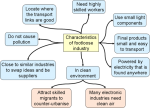
footloose industries
THE IDEA OF FOOTLOOSE industries has changed along with the transformation from an industrial to a postindustrial economy. The core concept remains the same, however: A footloose industry does not have a strong locational preference because the resources, production skills, and consumers on which it depends can be found in numerous places. Such a company […]

floods
OF ALL THE NATURAL hazards in the world, floods are the most widespread. Historically, floods have killed more people and caused more damage than any other type of natural disaster. A flood is defined as an overflowing of water on an area that is normally dry. There are several types of flooding, including river flooding, […]
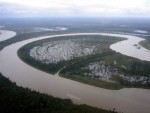
floodplain
FLOODPLAINS HAVE been a focal point of settlement throughout history and of controversy in recent decades. Humans are drawn to floodplains to cultivate the fertile soils that compose them. Floodplains are some of the best lands for growing crops, but they come with a price. Sometimes, rivers exit their banks and inundate the flat lands […]
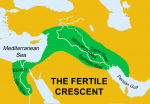
Fertile Crescent
THE FERTILE CRESCENT, an area between the Tigris and Euphrates rivers, was called Mesopotamia by the ancient Greeks. This meant “the land between the rivers.” The Fertile Crescent extends from the eastern shore of the MEDITERRANEAN SEA to the PERSIAN GULF and gets its name from its shape. James Breasted, an archeologist from the University […]

federation
GEOGRAPHICALLY, a federation (from the Latin foedus, meaning “league,” “ covenant,” or “ alliance”) is a political system created by the voluntary association of distinct political units and formally established by treaty or compact. It is a system of dual sovereignty. Each unit maintains some form of independent administrative power or local identity and sovereignty. […]

Fayum
FAYUM (also spelled “Faiyum” or “Fayyum”), comes from the Coptic Phiom (“sea”), and geographically designates a muhafazah (governorate), formerly a mudiria (province) of Upper EGYPT, an oasis in northcentral Egypt adjacent to the NILE RIVER, with significant paleontological and archaeological interest. Fayum is one of 26 administrative divisions of the Arab Republic of Egypt and […]
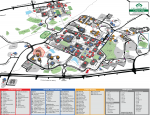
facilities mapping
FACILITIES MAPPING (FM) is the process of digitally identifying and mapping facilities infrastructure with the explicit goal to improve operational management and planning tasks such as dispatching, inventorying, and maintenance. Some examples of facilities include utilities (gas, water, telephone, and electricity), airport siting, and transportation planning. In the past, when a facilities map was needed, […]
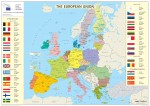
European Union
THE EUROPEAN UNION (EU), with 25 member states in 2004, had its initial organization created after World War II for the purpose of rebuilding Europe after the turmoil and devastation of the war. It was thought that economic and political cooperation would greatly reduce the risks of repeating such a conflict and would be the […]
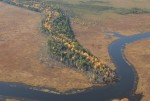
esker
AN ESKER IS A LONG, narrow, often snakelike ridge of sand and gravel deposited on top of the ground where a glacier has retreated. Eskers often follow valleys and lowlands, although some can go uphill. Most eskers are a single ridge, but there are also braided ridges, which are similar in shape to river tributaries. […]
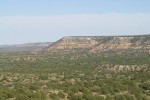
escarpment
IN GEOLOGY, an escarpment is a steep edge of a ridge or cliff, characterized by an abrupt transition in altitude between two relatively level but differently composed series of sedimentary rocks, differing in age and composition. Escarpments, also known informally as “scarps,” are usually representative of the line of erosion of newer rock over the […]
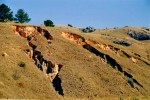
erosion
EROSION HAS MADE huge changes in the surface of the Earth and is still doing so today. Erosion is the removal of materials from the Earth's surface by a variety of processes. The material is eventually deposited elsewhere, often far from where it started. Most erosion is caused by the action of wind, water, or […]

erg
THE TERM erg is the Bedouin name for a very large body of sand dominated by sand dunes. Bedouins are an African tribe of nomadic herders living in the northern SAHARA DESERT. Two equivalent English-language terms are sand sea and dune field. Transverse dunes typically are part of ergs, or sand seas. As sand is […]

epidemiology
THE WORD EPIDEMIOLOGY is derived from the Greek epi (“upon”), demos (“people”), and logos (“study of”). It refers to the study of phenomena that have been put “upon” people, specifically, afflictions that weigh upon the health of a population over space and time. Epidemiology is a multidimensional science that deals with the study and occurrence […]

entrepot
AN ENTREPOT (from the Latin emporium) is a settlement founded specifically for commercial activity or a market or mart located within or on the periphery of an administrative/political center. The origins of the entrepot are traced to the commercial behavior of ancient societies. Traders entering foreign territory were exposed to numerous natural and cultural hazards. […]

energy geography
ENERGY GEOGRAPHY IS a subdiscipline of geography that draws from many philosophical and thematic traditions, but it is primarily positioned in the interface of environmental and economic concerns. The extraction, harnessing, and consumption of the natural resources that supply society with our energy needs have always been central to economic activities. Over time, however, it […]
enclave
AN ENCLAVE is a political unit that is completely enclosed within a foreign territory. It is called an “exclave” from the perspective of the country that has sovereignty over it. An enclave can also exist on a subnational level when a subdivision has land outside its parent territory. The enclaves can be created for geological, […]
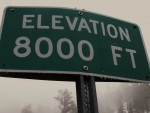
elevation
ELEVATION CAN BE defined as a measure of the height above mean sea level. When specifying a location on (or above) the surface of the Earth, elevation is commonly considered to be the third coordinate, complementing measures of LATITUDE AND LONGITUDE. Similarly, bathymetric measurements provide a depth below mean sea level to the floor of […]
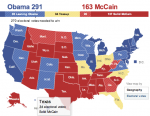
electoral geography
ELECTORAL GEOGRAPHY is a part of POLITICAL GEOGRAPHY. It is the geographical study of political space in democratic states. Electoral research in dictatorships can be useful although, their citizens are not really freely choosing. Electoral geography is therefore a special study of electoral processes and districts to map election results and then to test the […]

ECOWAS
THE ECONOMIC COMMUNITY of West African States (ECOWAS), also known in French as Communaute Economique des Etats de l'Afrique de l'Ouest (CEDEAO), was first formally set out at the Monrovia Group meeting in April 1968. By the Treaty of Lagos, 15 representatives from West African states formed ECOWAS in Lagos, NIGERIA, on May 28, 1975. […]
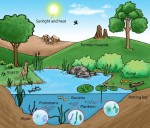
ecosystem
THE CONCEPT OF the ecosystem began with the establishment of the science of ecology which is credited to Ernst Haekel, a German zoologist who coined the term ecology in 1869. He based this term on the Greek word oikos, meaning “a place in which to live.” It was another 60 years before the term ecosystem […]

economic geography
KNOWLEDGE OF ECONOMIC geography was first essentially descriptive, with a focus on the REGION and its economy, demography, and social characteristics. It represented the typical approach in research agenda in North America and Western Europe. The birth of economic geography dates from the age of European exploration, with an expansion in commercial geography from the […]

ecology
ECOLOGY IS THE study of the interaction between an organism and its physical environment. Human ecology specifically focuses on humans as a group of organisms and their mutual relationships within the habitat. The term ecology has its origin in two ancient Greek words: oikos (house or habitat) and logia (words or teaching). Thus, the concept […]
ecological niches
IN CONTEMPORARY ecology, the term ecological niches is referred to as the position occupied by representatives of any life form (usually alive) in biocenosis, and, at the same time, the smallest unit of a habitat that is occupied by an organism. The notion reflects an organism's or species's place in the community, taking into account […]
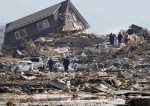
earthquakes
STRONG GROUND motion occurs whenever energy, conserved as strain in the Earth's crust or upper mantle, is released instantaneously. In such an event, commonly called an earthquake, energy radiates from the source of release in a series of waves. As waves propagate through rock and other elastic media, they cause periodic displacements (movements up and […]
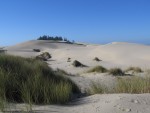
dunes
DUNES ARE PILES of windblown sediment. Geomorphologists refer to dunes and other wind-created features as aeolian landforms. (Aeolus was the ancient Greek god of the winds.) Geomorphologists also refer to dunes as sand dunes, as sand is the most common type of sediment in the deposits. Dunes sometimes include sand-size aggregates of clay, gypsum, or […]

domino theory
THE DOMINO THEORY states that if one vital country in a region falls to an expansionist negative philosophy, then other countries in the region similarly situated and similarly structured would fall victim to the same philosophy, either through force or through influence of example. In its pure form, the negative philosophy is communism but in […]

distance
EMPLOYING THE GEOGRAPHIC sense of the term, distance can be defined as the amount of separation between two points or objects on the surface of the Earth. Geographic distance is usually expressed as a linear measurement between locations using one of several commonly accepted metrics (a metric is a standard of measurement using associated units). […]
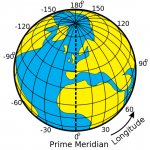
direction
DIRECTION IS DEFINED as the line or course on which something is moving, or at which it is aimed to move, or toward which something is pointing or facing. Direction is commonly referenced as an angle made by a given line with an axis of reference, that is up, down, right, left, and so on. […]
diffusion
DIFFUSION IS the spread of a phenomenon, such as an idea, a technological innovation, or a disease, over space and time. The origins of interest in diffusion in geography can be traced back to the work of the German geographer Frederick Ratzel (1844–1904). In the second volume of his highly influential Anthropogeographie, Ratzel described the […]

determinism
DETERMINISM (from the Latin determino, meaning “define”) is a basic philosophical theory about general interdependence and interconditionality of phenomena and processes. This idea was explained for the first time in ancient natural philosophy (atomistic ideas, peripathetic school), in notions about primary origins and elements. Later, it was developed by Persian poet Omar Khayyam, Italian naturalist […]

desertification
SINCE THE mid-1970s, the United Nations (UN) has considered desertification a significant environmental problem involving high economic, societal, and human costs. The UN's Conference on Desertification, held in 1977, outlined an action plan over a 20-year period that, unfortunately, did little to change the course of desertification. The definition of desertification itself is controversial. In […]
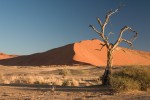
desert
THERE IS A TENDENCY, in popular opinion and some public policy, to view deserts dismissively as unproductive wastelands. The 14th edition of the Encyclopedia Britannica made the case with exuberant eloquence: “Desert, a term popularly applied to any environmentally extreme, deserted, desolate, uninhabitable waste area.” While they are indeed less productive of biomass than other […]

demographics
DEMOGRAPHY IS THE study of populations (a term used to denote the collection of persons alive at a particular point in time and who meet certain criteria). Demographics have to do with population statistics. Usually referred to as a census, most often these data are collected through a survey process and by public agencies at […]
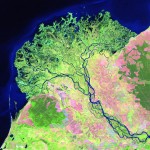
delta
A DELTA IS AN AREA of land that has been built up at the mouth of a river, where it flows into a quiet body of water, such as a lake or an ocean. The delta is formed when the river, which is moving swiftly and carrying sediment such as mud, slows down to enter […]

Davis, William M. (1850–1934)
WILLIAM DAVIS WAS among the leading geographers of the early part of the 20th century. Today, Davis might be more narrowly considered a geomorphologist based on his major research interests. But in his time, Davis enjoyed considerable influence over the direction and conduct of geographical science, in the UNITED STATES and in Europe. Born to […]

Darien Gap
STRADDLING THE BORDER of the republics of PANAMA and COLOMBIA, the Darien Gap is home to one of the least exploited and most diverse ecosystems in the world. Flanked by the PACIFIC OCEAN to the north and west and the CARIBBEAN SEA to the east, the area includes two national parks, Darien National Park in Panama […]

Danubian Gates
FOR CENTURIES, traffic along the DANUBE RIVER was hindered by a stretch of treacherous rocks and narrow gorges at the point at which the river cut through the Southern Carpathian mountain range. This stretch, about 62 mi (100 km) in length, along the border of ROMANIA and Yugoslavia (SERBIA), is known as the Danubian or […]

cyclones
CYCLONES ARE HAZARDOUS weather conditions distinguished by extreme blasts of wind moving in a circular pattern. Cyclones generally appear over tropical waters; however, some are able to reach land, where they inflict significant damage on buildings and communities. Cyclones can be placed into categories such as hurricane (Western Hemisphere) and typhoon (Eastern Hemisphere). The categorization […]

cultural geography
CULTURAL GEOGRAPHY IS a subdiscipline of HUMAN GEOGRAPHY. The founding father of cultural geography in North America is Carl Ortwin SAUER, and most of the research in cultural geography from the 1920s to the beginning of the 1980s was carried out by cultural geographers walking in the footsteps of Sauer and the so-called Berkeley School. […]

core and periphery
CORE AND PERIPHERY are terms used in geographic models to describe areas of differing economic production and political power and can be applied to both intra- and interstate variations. Core areas are described as the engines of economic growth and are characterized by modern, technologically advanced production methods as well as highly skilled and highwage […]

continents
THE EARTH IS AN ocean-dominated planet. Only one-third of the planet's surface is dry land. The Earth's land areas include innumerable islands and several larger expanses of land termed continents. A continent is defined as a mass of land significantly larger than an island, completely or nearly surrounded by ocean water. By common agreement among […]
continentality
CONTINENTALITY IS A climatic effect that results from a continental interior being insulated from oceanic influences. Winds and air masses of moderate temperature that originate over oceans move onshore to diminish differences in winter and summer temperatures in coastal areas of continents. Interiors of continents are too distant to experience the moderating effect. As a […]

continental shelf
A CONTINENTAL SHELF is the submerged top of the continent's edge, lying between the shoreline and the continental slope that forms a border to a continent. In other words, the surface of the Earth lies at two general levels: a lower, which is the floor of the ocean basins, and an upper, the parts of […]

continental drift
CONTINENTAL DRIFT INVOLVES large-scale horizontal movements of continents relative to one another and to the ocean basins during one or more episodes of geologic time. The hypothesis of large-scale movement or displacement of continents has a long history. About 1800, Alexander von Humboldt, a German naturalist, noted the apparent fit of the bulge of eastern South […]
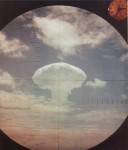
containment
CONTAINMENT IS a political concept that served as the muted geopolitical battle cry for the UNITED STATES in the four decades of the Cold War (1947–89). It was first articulated in an embassy report from a young diplomat in Moscow dated February 22, 1946. In the “long telegram” George F. Kennan laid out a philosophical […]
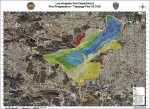
computer mapping
COMPUTER MAPPING IS the general term used to describe the process of developing digital maps from aerial photographs, satellite images, global positioning systems (GPS) records, paper maps, and other archival data sources. GEOGRAPHIC INFORMATION SYSTEMS (GIS) are currently the most common implementation of computer mapping systems. A GIS consists of an organized collection of computer […]

commercial agriculture
PRIOR TO THE FIRST AGRICULTURAL REVOLUTION, people relied on hunting and gathering to obtain food supplies. The agricultural revolution began as the individuals in the society began to cultivate soil, plant seeds, and use plows and animals to assist with the cultivation of the soil. This change from a hunting and gathering society did not […]

colonialism
FROM THE ONSET of trade, the merchant traders established colonies in the foreign places where they did business. Those early merchant colonies were not colonialist in the strict sense. The merchants resided in foreign cities by the grace of the city officials. More commonly, colonialists dominated the indigenous peoples. The Greeks and Romans established military […]
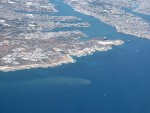
coastal zone
THE COASTAL ZONE is where nature breathes its essence into poets and painters. Ancient Greeks believed it was where Neptune's energy encounters land. People living in the UNITED STATES call this transition between land and sea the shore, coast, or beach. Robert Gabler et al., define the coastal zone as “the dynamic region on land […]